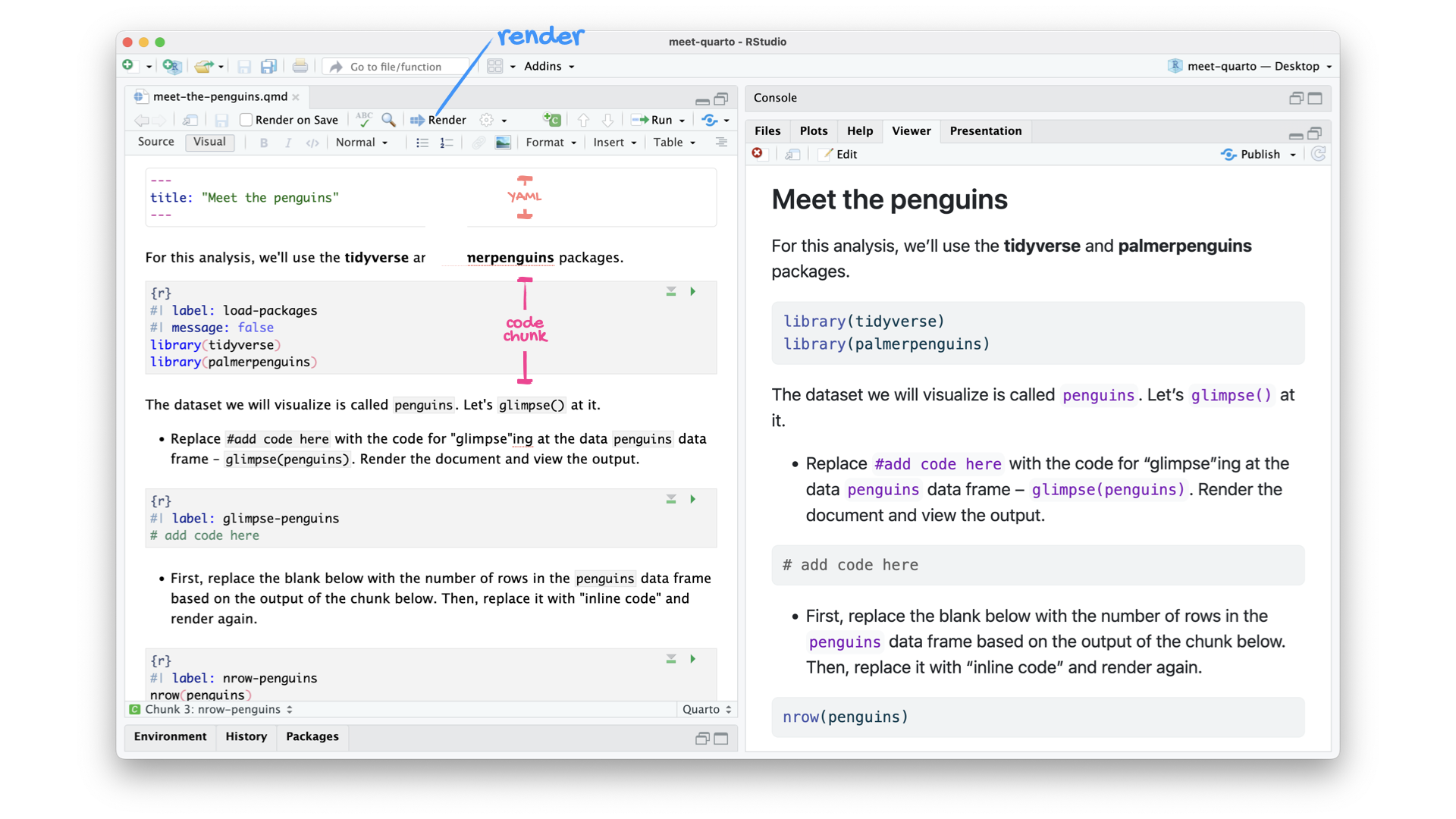Meet the toolkit: Quarto
Data visualization and transformation
Learning goals
By the end of the course, you will be able to…
gain insights from data
gain insights from data, using modern programming tools and techniques
gain insights from data, using modern programming tools and techniques, reproducibly with literate programming
gain insights from data, using modern programming tools and techniques, reproducibly with literate programming and version control
Reproducible data analysis
Reproducibility checklist
What does it mean for a data analysis to be “reproducible”?
Short-term goals:
- Tables and figures must be reproducible from the code and data
- The code should actually do what you think it does
- In addition to what was done, it should be clear why it was done
Long-term goals:
- The code should be usable for other data
- The code should be extendable to do other things
Toolkit for reproducibility
Scriptability → R
Literate programming (code, narrative, output in one place) → Quarto
Version control → Git / GitHub
Quarto
- Open-source scientific and technical publishing system
- Fully reproducible reports – each time you render the analysis is ran from the beginning
- Code goes in chunks narrative goes outside of chunks
- A visual editor for a familiar, Google Docs/MS Word-like editing experience
Let’s take a tour of

Tour recap: Quarto

Environments
Important
The environment of your Quarto document is separate from the Console!
Remember this, and expect it to bite you a few times as you’re learning to work with Quarto!
How will we use Quarto?
Every code along is a Quarto document
You’ll always have a template Quarto document to start with
The amount of scaffolding in the template will decrease over the semester